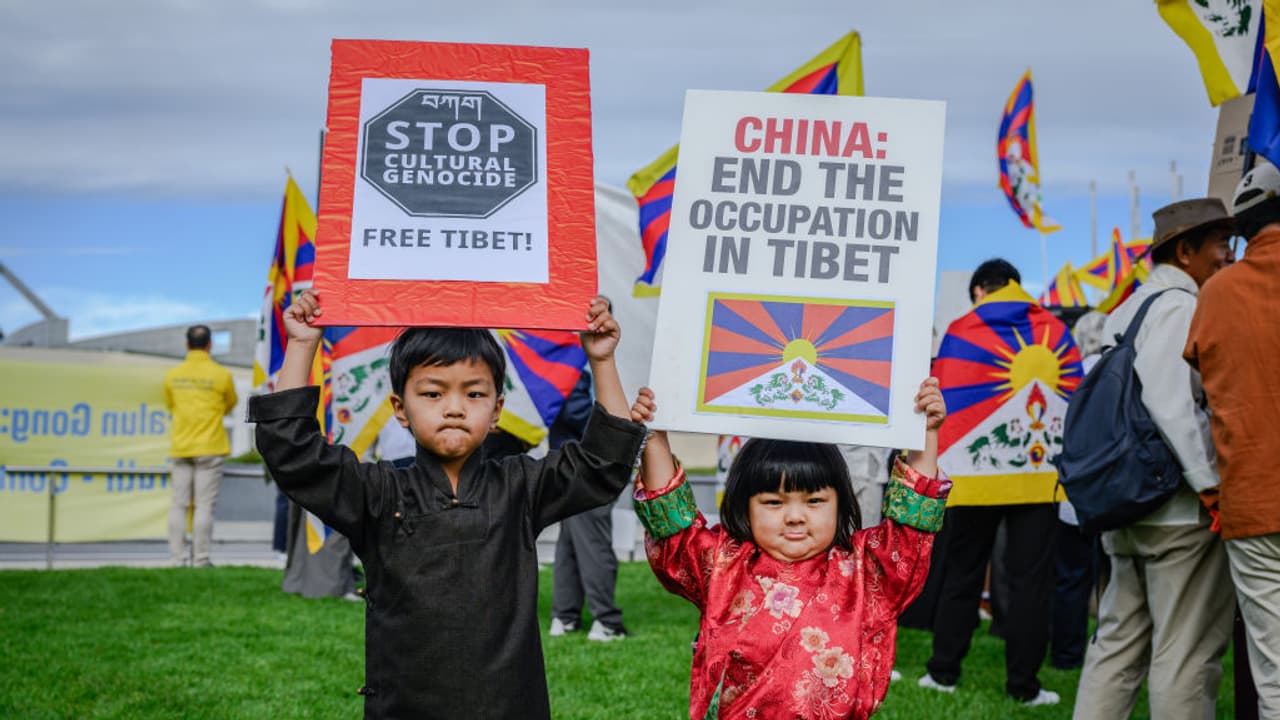China’s 1951 Seventeen Point Agreement, signed under duress, marked its takeover of Tibet, sparking decades of cultural genocide, religious repression, forced Sinification. Dalai Lama repudiated the deal in 1959 after the Tibetan uprising and exile.
New Delhi: The Seventeen Point Agreement for the peaceful liberation of Tibet was signed under duress on May 23, 1951. The event marked a turning point in Tibetan history. The Chinese government has since heralded it as a “peaceful” solution. However, in reality, it was the People’s Republic of China’s (PRC) coercive strategy to legitimize its unlawful occupation of Tibet. It was a sovereign nation until that point of time.
China’s 1951 Seventeen Point Agreement
The so-called agreement, imposed without the consent of the Tibetan government or its spiritual leader, the 14th Dalai Lama, stands as a striking example of colonial-era deception persisting into modern Asia.
When the Chinese Communist Party seized power in 1949, it declared its intention to “liberate” Tibet – a territory it had never governed at any point in its history
In October 1950, the People’s Liberation Army (PLA) invaded eastern Tibet and quickly defeated the small and poorly equipped Tibetan army at Chamdo.
Realizing the military imbalance, the Tibetan government sought negotiations – not submission – and dispatched a delegation to Beijing in 1951. These delegates were not authorized to sign any binding agreement.
Nevertheless, under threats of full-scale invasion and with no support from major world powers, they were forced to sign the Seventeen Point Agreement on May 23, 1951.
Although the agreement claims that the Dalai Lama would ratify it, he did not. The Tibetan government formally denounced the agreement after the 1959 Tibetan Uprising, when the Dalai Lama fled to India.
The signatures of the Tibetan delegates were obtained under threat of violence, and the Chinese government even forged the Tibetan seal on the final document.
In a statement from 1959, the Dalai Lama said: “The agreement was signed under duress and is therefore invalid.”
The Seventeen Point Agreement became the legal facade for China’s occupation of Tibet. It allowed China to enter Lhasa, dismantle the Tibetan political system, and impose communist ideology.
The promises of religious freedom and autonomy were abandoned, leading to the 1959 uprising and subsequent crackdown, destruction of monasteries, cultural genocide, ongoing Sinification of education, religion, and language.
Beforehand, the PLA had occupied Amdo and Kham, and the Dalai Lama and his supporters had sought refuge in Dromo, south Tibet.
According to the Dalai Lama’s autobiography, the negotiator Ngabo Ngawang Jigme was not authorized to sign anything on his behalf and counterfeit seals of the Tibetan state were used.
Seventeen Point Agreement starts with “The Tibetan people shall unite and drive out invading imperialist forces from Tibet”. At that time, there was no threat to Tibet other than from China.
The acceptance of the agreement
The Dalai Lama reluctantly accepted the Agreement because there was no mention of surrendering Tibet’s sovereignty. From point four to point seven in the Agreement, there were specific mentions of powers and functions of the Tibetan government, namely, “The central authorities will not alter the existing political system in Tibet. The central authorities will also not alter the established status, functions and powers of the Dalai Lama. Officials of various ranks shall continue to hold office.”
“The established status, functions and powers of the Panchen Ngoerhtehni shall be maintained.”
“The established status, functions and powers of the Dalai Lama and of the Panchen Ngoerhtehni mean the status, functions, and powers of the 13th Dalai Lama and the 9th Panchen Ngoerhtehni when relations between them are friendly and amicable.”
“The policy of freedom of religious belief as laid down in the common program shall be carried out. The religious beliefs, customs and practices of the Tibetan people shall be respected, and lama monasteries shall be protected. The central authorities will not influence or change the income of the monasteries”.
Nothing in this regard happened on the part of China, and it only increased its grip on Tibet and its way of life. Increasing attempts at Sinification started to happen, which compelled the Dalai Lama to repudiate the Agreement legally.
In response, China attacked the historical Potala Palace, which is the historical home of the Dalai Lama. Year 1959 marked the historical Tibetan uprising, which China crushed, and the Dalai Lama had to take refuge in India.
Tibet-China-India
Tibet’s occupation has become a flashpoint between India and China. One of the major reasons of the Sino-Indian War 1962 was the Tibet dispute, escalating from border skirmishes after the Dalai Lama’s 1959 exile to India. This development had angered China.
China viewed Tibet as an internal matter and was further provoked by CIA-backed Tibetan resistance and India’s “Forward Policy”.
The conflict culminated in a Chinese military offensive across the disputed borders in the Aksai Chin and North-East Frontier Agency (NEFA), leading to a brief but decisive war that saw China withdraw after securing significant territory.
Conflicts along India’s border with China revolve on two sizeable regions, namely Ladakh and Arunachal Pradesh.
China says that the latter is a part of “Southern Tibet” and the former is a part of the Aksai Chin territory, which is under its administration.
The most recent manifestation of these conflicts were the clashes between Indian and Chinese soldiers in the Indian Galwan valley in June 2020, which resulted in fatalities on both sides.
Such events demonstrate how Tibet has been and will continue to be a crucial component of India-China ties and a key issue in the context of their border dispute.
